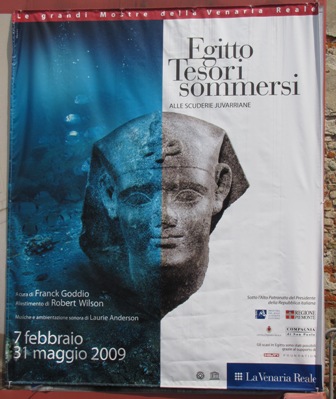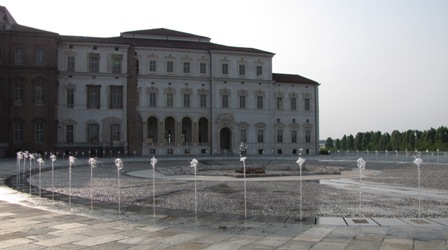A while ago, I asked my dear Sherlock (grazie!) to send me the study on this very topic, published in the January 29 2009 and also the May 28 issues of “Blood”: http://tinyurl.com/nn4nrg (Update: after writing and publishing this post, I discovered that the full study is available for free online, just click on the tinyurl link, then on “full text”; please note that there is also a related Spanish article titled “Are all myelomas preceded by MGUS?”…you will find the link almost at the bottom of the page).
12 researchers from different cancer institutions examined the cases of 77,469 individuals who had participated in the nationwide population-based prospective 1992-2001 “Prostate, Lung, Colorectal and Ovarian Cancer Screening Trial” or PLCO. They identified 71 patients who developed MM during the course of the study. A series of tests determined that almost all had passed through a prolonged pre-malignant stage (8+ years before diagnosis). I would like to point out that, at the beginning of the study, all the trial participants were healthy.
A few details concerning the 71 myeloma patients: 71.4 % were males, and the average age was 70. Important note: 8+ years before their MM diagnosis, 82.4% of these patients had MGUS. But 2 years before their MM diagnosis, 100% of them had MGUS. Therefore, In the present study, an asymptomatic MGUS stage preceded the diagnosis of MM in all cases. “In all cases.” Wow. Anyway, you can read a few more details and numbers in the abstract.
The full study begins with the usual dire statistics…skip skip skip. Then we find the crucial question: is myeloma always preceded by asymptomatic MGUS or SMM? If so, the researchers say, then we need to focus on identifying risk factors for MGUS and to improve our knowledge on underlying mechanisms of transformation from MGUS to MM, with the aim to define better predictive markers of progression and to develop chemopreventive approaches. Good idea!
And then: how can a preceding MGUS stage be ascertained in folks who are diagnosed with myeloma? If there are no blood samples from previous years, that would be impossible. And in fact the researchers write that Thus far, it has been impossible to determine if a protracted premalignant phase (MGUS) precedes MM in all patients.
“Thus far.” But the above-mentioned Screening Trial gave these researchers the golden opportunity to test blood samples taken from patients 8 years plus before their myeloma diagnosis. All that blood was tested via serum protein electrophoresis, immunofixation and FLC assays.
Interesting titbit. MGUS and SMM were lumped together, because for the purposes of this study our interest was to determine whether a premalignant asymptomatic stage preceded all cases of MM, regardless of whether that stage met the clinical diagnosis of MGUS or smoldering MM. So when we read MGUS in this study, it also means SMM (my current stage). Good to know.
A few more details: the researchers discovered that about 50% of the MM cases remained fairly stable…whereas the rest had a yearly M-protein increase. In the end, though, all of these patients—the fairly stable ones and the, er, more unstable ones—progressed to active myeloma (well duh, this is hardly surprising, since the researchers examined patients who ended up being diagnosed with myeloma…not those who remained MGUS or SMM).
In the Discussion, the researchers write that virtually all MM cases are preceded by MGUS. They then add: At the same time, however, one has to keep in mind that the vast majority of MGUS cases will never develop MM. It depends, they say, on the status of risk factors such as a high serum M-protein level, non-IgG MGUS and so on. In the absence of risk factors, the likelihood of progressing to active myeloma is itsy bitsy teeny tiny.
The researchers point out that it would be important to identify, via molecular markers and whatnot, the subsets of MGUS cases at high versus low risk of developing MM. Our finding that MM is universally preceded by a prolonged premalignant stage with up to 75% of MM patients having detectable M-protein 8 or more years prior to diagnosis of the malignancy fills a key gap in the present literature on myeloma-genesis.
They then add that even those who have had MGUS (or SMM) for 25-30 years may progress eventually to active disease. So our risk of developing myeloma diminishes with every “stable” year that passes but never vanishes, so we have to resign ourselves to be monitored for the rest of our lives. Well, no surprises there…
I came across an interesting hypothesis concerning those who progress from MGUS to active myeloma. In these particular cases, the researchers suggest that MGUS might not be a benign condition at all, but rather a slow-growing form of myeloma. They write that Although it remains to be confirmed, we have speculated that “evolving MGUS” potentially could be a reflection of an “early” myeloma with a slow rate of progression. Well, well…
There were a few drawbacks in this study, such as the lack of a younger-than-55 population: the population-based PLCO cancer screening study enrolled healthy individuals who were 55-74 years at baseline […]. And let’s not forget that the average age of the 71 myeloma patients was 70. Quite a big drawback, especially for younger folks like yours truly. Oh well.
The study ends with the following statement: Thus, regardless of the terminology used (MGUS or otherwise), we can confidently say that the presence of an M-protein in 93% of patients with MM seven years prior to diagnosis of MM as seen in this study strongly confirms that a protracted premalignant stage (biologic MGUS) precedes all cases of MM. […] Future studies are needed to provide new insights on the pathogenesis of MGUS and better predictors for development of MM in order to take early actions to prevent or delay MGUS progression.
I would have been curious to know how many of the PLCO participants remained MGUS or SMM. Too bad that data couldn’t have been included here. Oh well…can’t have everything!
 I am sending you a huge birthday hug! I wish you and niecie could beam yourselves over the ocean at least for today, so we could all be together. Well, at the very least I hope that you-know-who lets you win a Scrabble game or two today! (wink!)
I am sending you a huge birthday hug! I wish you and niecie could beam yourselves over the ocean at least for today, so we could all be together. Well, at the very least I hope that you-know-who lets you win a Scrabble game or two today! (wink!) I have to admit that I was a bit disappointed in the ancient Egyptian exhibition hosted at Reggia Venaria…yes, there were some magnificent colossal statues, and the one in the last room was splendid…but I had expected to be absolutely floored by the reproduction of the underwater environment…and…well, that just didn’t happen. The “underwater” part of the exhibit consisted mainly of a series of darkened rooms…one in particular was a dark narrow hallway displaying artefacts behind small glass “portholes” positioned at various heights. Under normal circumstances, bending over to peer inside a “porthole” would not have been a problem…but on Saturday afternoon the place was crowded with hot and tired tourists wandering around aimlessly in the very stuffy darkness. I had to be careful about not bumping into them. That was a rather unpleasant experience, yes, especially whenever I heard someone cough nearby (YIKES!). I don’t suffer from claustrophobia, but if I did…well, I’d have scampered out of there like a rabbit fleeing from hungry lions!
I have to admit that I was a bit disappointed in the ancient Egyptian exhibition hosted at Reggia Venaria…yes, there were some magnificent colossal statues, and the one in the last room was splendid…but I had expected to be absolutely floored by the reproduction of the underwater environment…and…well, that just didn’t happen. The “underwater” part of the exhibit consisted mainly of a series of darkened rooms…one in particular was a dark narrow hallway displaying artefacts behind small glass “portholes” positioned at various heights. Under normal circumstances, bending over to peer inside a “porthole” would not have been a problem…but on Saturday afternoon the place was crowded with hot and tired tourists wandering around aimlessly in the very stuffy darkness. I had to be careful about not bumping into them. That was a rather unpleasant experience, yes, especially whenever I heard someone cough nearby (YIKES!). I don’t suffer from claustrophobia, but if I did…well, I’d have scampered out of there like a rabbit fleeing from hungry lions! 

